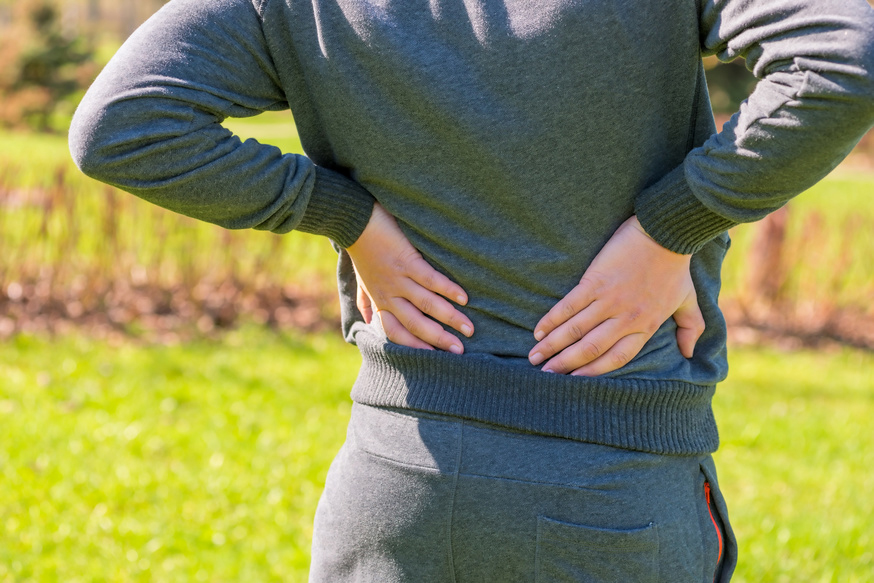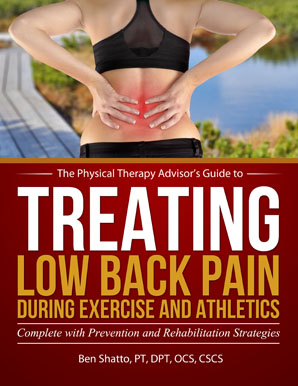We all know the importance of exercise, fitness, and generally staying active. For some of us, we look to exercise and fitness as a way to have fun and stay in shape. Others use activity to help manage stress or chronic illnesses such as diabetes, osteoporosis or heart disease. Exercising and staying active is an important component to aging well. It can be very disappointing when you don’t meet your training or exercise goals. One of the most common reasons for not meeting goals is also one of the most preventable reasons: injury! Nothing derails a perfectly developed training plan like an injury.

The most common injury for those in the western world is low back pain (LBP). LBP is estimated to affect nearly 80% of the U.S. population at one time or another. And worse yet, once you have experienced an episode of LBP you have a 90% chance of having a reoccurrence.
Risk Factors for Low Back Pain (LBP):
- Sitting too much.
- Slouched sitting.
- Prior episodes of LBP.
- Smoking.
- Poor core and back extensor muscle strength.
- Lack of a proper warm up and a cool down.
- High training volumes with inadequate rest (overtraining syndrome).
Some of the specific risk factors for LBP are also risk factors for other types of injury. Lack of adequate core strength (particularly, strength in the outer core and pelvic/hip musculature) can contribute to injuries such as:
- Iliotibial band syndrome (ITBS)
- Hip bursitis
- Runner’s knee (Patellar Femoral Pain Syndrome)
- Piriformis syndrome
- Meniscal injuries in the knee
- Achilles tendinitis
- Plantar fasciitis
Although this is not a complete list, it highlights many of the most common injuries affected by weakness in the core and pelvic/hip muscles.
Consider the amount of repetitive force your body must absorb even with walking (not to mention during sports or exercise). The outer core muscles are responsible for movement of the trunk and spine as well as aiding in stability. (Although critical for stability, the inner core muscles don’t actually produce any trunk or spine movement.) The outer core muscles consists of the following muscles: lumbar paraspinal muscles; the quadratus lumborm; the internal and external obliques; and the psoas major and minor (hip flexors). Some may also include the glutes (buttocks muscles), hamstrings, and quadriceps as part of the outer core muscles.
Imbalances or a lack of strength within the core musculature often times will manifest in altered lower body mechanics and an inability for the body to properly absorb and distribute forces. Over time and many miles, the body’s tissues eventually break down and can lead to a repetitive use injury in the lower extremity.
As a physical therapist, I always assess the core and hip musculature and look for imbalances in strength when determining the root cause of an injury. In the majority of cases, I find that a component of hip and core muscle weakness has led to the injury.
The good news is that this is a completely preventable problem. Most of us already know that we need to cross train and that proper core strength is important. However, too many of us either don’t dedicate enough time to the process or we aren’t performing the correct exercises. Performing proper core exercises and particularly, lumbar stabilization exercises are the primary treatment modality for low back pain (LBP).
Proper core and lumbar extensor strength is the key to preventing an episode of LBP and is also a critical step in avoiding other types of injuries affected by weakness in the core and pelvic/hip muscles. The most important factor in meeting your goals is to be consistent in your training by avoiding injury! Don’t let LBP affect your ability to stay active and keep enjoying your favorite activities!

AVAILABLE NOW ON AMAZON!
In my book, Treating Low Back Pain during Exercise and Athletics, you will learn how to address specific causes of LBP as well as the best practices on how to prevent and self-treat when you experience an episode of LBP. In this step-by-step LBP rehabilitation guide (complete with photos and detailed exercise descriptions), you will discover how to implement prevention and rehabilitation strategies to eliminate pain and get back to training and exercise sooner.
Learn how to prevent, self-treat, and manage LBP so you can get back to your daily life and exercise goals more quickly without additional and unnecessary costly medical bills!
